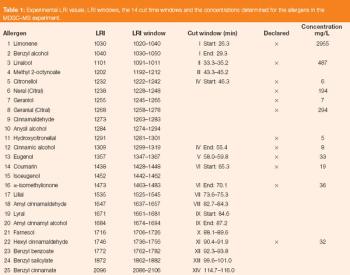
A chronological examination of GC is presented here, with a look at where the technique is heading and how it can be used to advance environmental sustainability.

A chronological examination of GC is presented here, with a look at where the technique is heading and how it can be used to advance environmental sustainability.

In the present research, similar chromatography fingerprints were obtained using finely-tuned cryogenic-modulation (CM) and flow-modulation (FM) comprehensive two-dimensional gas chromatography–mass spectrometry (GC×GC–MS) experimental conditions.

In the present research, similar chromatography fingerprints were obtained using finely-tuned cryogenic-modulation (CM) and flow-modulation (FM) comprehensive two-dimensional gas chromatography–mass spectrometry (GC×GC–MS) experimental conditions.

The concept of (heart-cutting) multidimensional gas chromatography (MDGC) was introduced shortly after the invention of gas chromatography (GC). In that first experiment, the term “two-stage” was used to define the multidimensional process in applications involving the heart‑cutting of four hydrocarbon fractions, ranging from C5 to C8. The latter were separated first on a nonpolar packed column, and then on a polar one. A rather complex combination of valves enabled two-dimensional (2D) analysis. The great potential of the approach became immediately evident.

This article is focused on the detailed qualitative analysis of the fatty acids and the unsaponifiable constituents of a vegetable oil derived from a food-industry waste product, namely lemon seeds.

An overview of important GC–MS techniques currently used in food analysis is described. Considerable attention is devoted to the use of the mass spectrometer, in relation to its poptential for separation and identification. The importance of comprehensive GC?GC is also discussed.


On-line heart-cut LC–GC and, more recently, comprehensive LC–GC (LC?GC) are very powerful analytical techniques because of the combination of the selectivity features of LC with the high efficiency of GC. This article presents an overview of the most recently used interfacing systems, as well as applications in the food analysis.

A fast heart-cutting liquid chromatography–gas chromatography (LC–GC) method for the analysis of mineral oil saturated hydrocarbons (MOSHs) in a range of widely consumed foods is described.

Using narrow-bore column fast GC combined with rapid scanning qMS to analyse flavours and fragrances is described.

A total of fourteen cuts were defined because the retention time difference between several skin sensitizors was only slight.

Published: August 1st 2023 | Updated:

Published: October 1st 2020 | Updated:

Published: May 1st 2012 | Updated:

Published: May 1st 2012 | Updated:

Published: May 1st 2012 | Updated:

Published: January 1st 2012 | Updated: